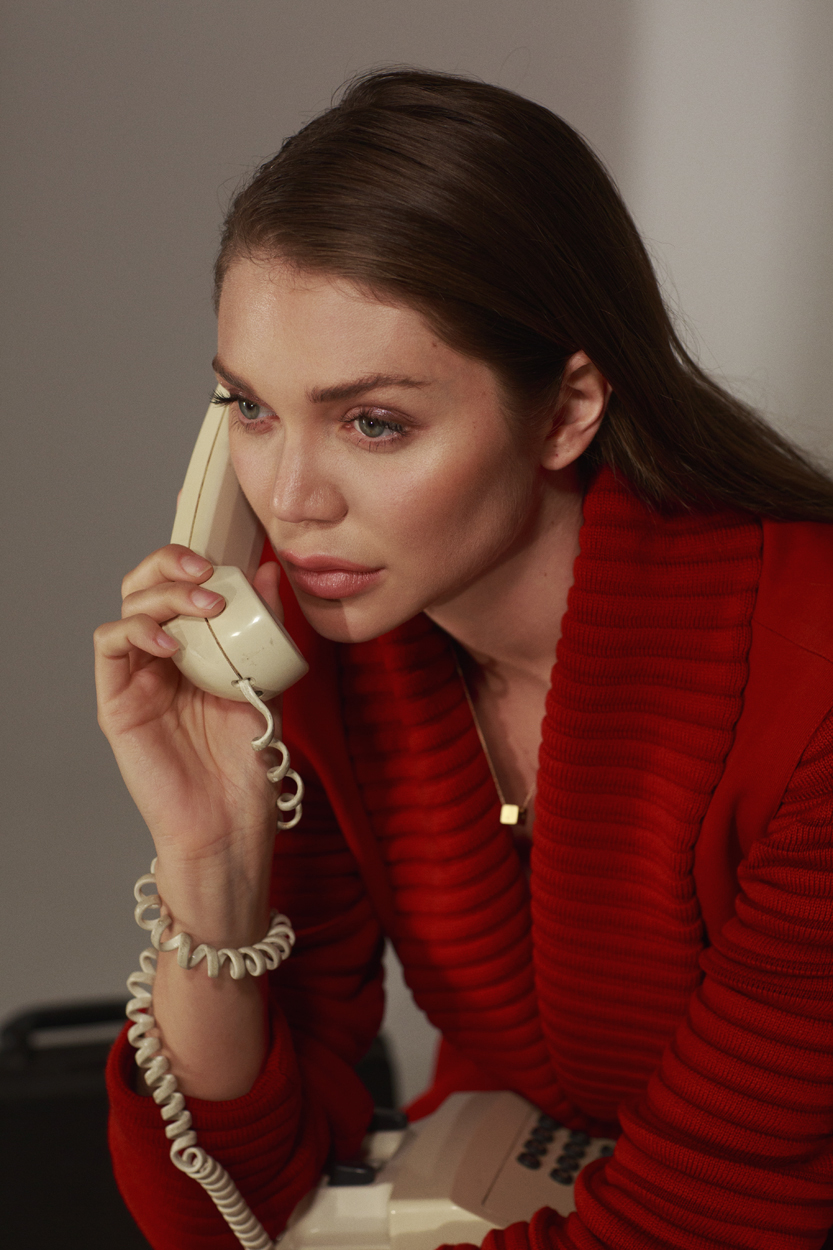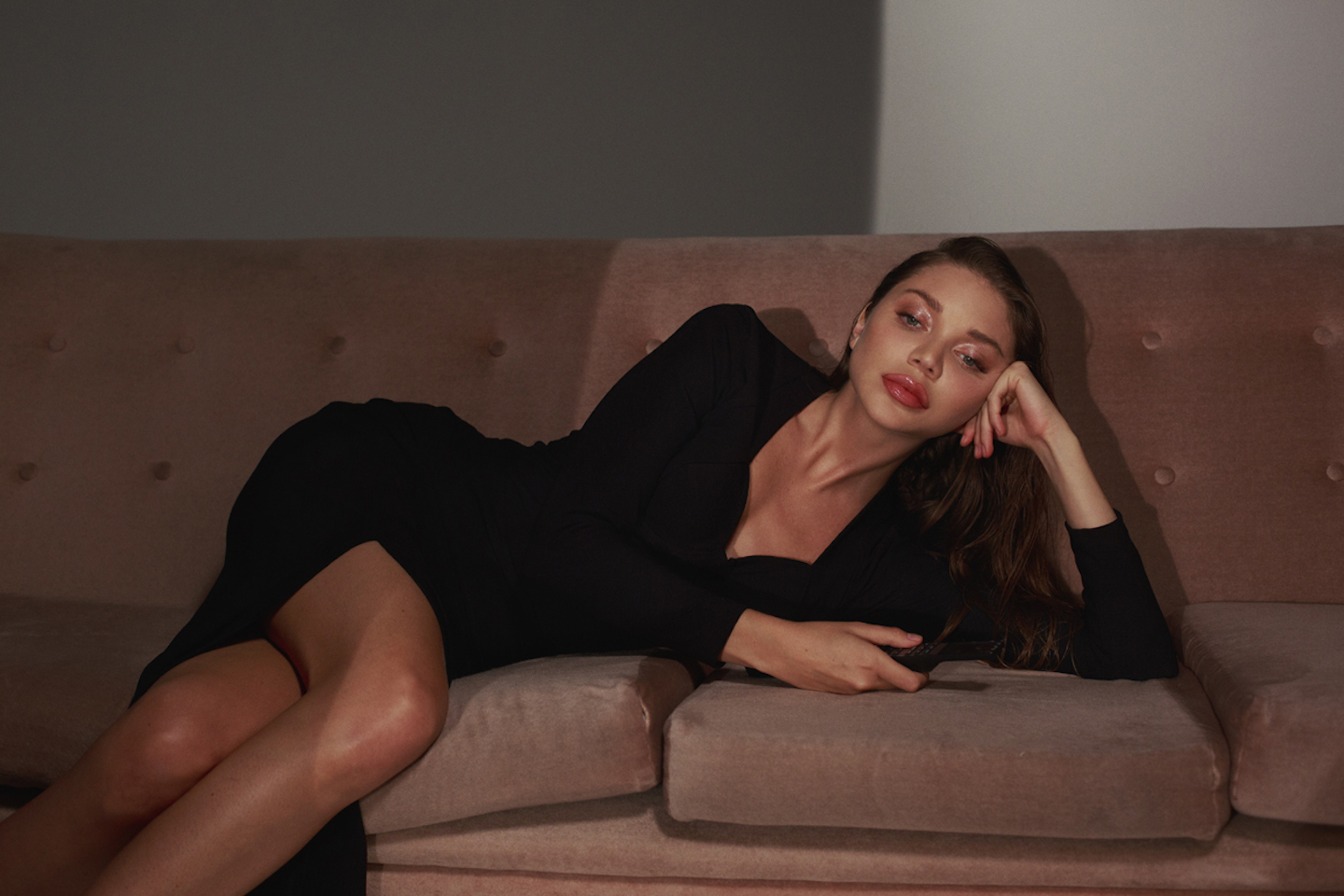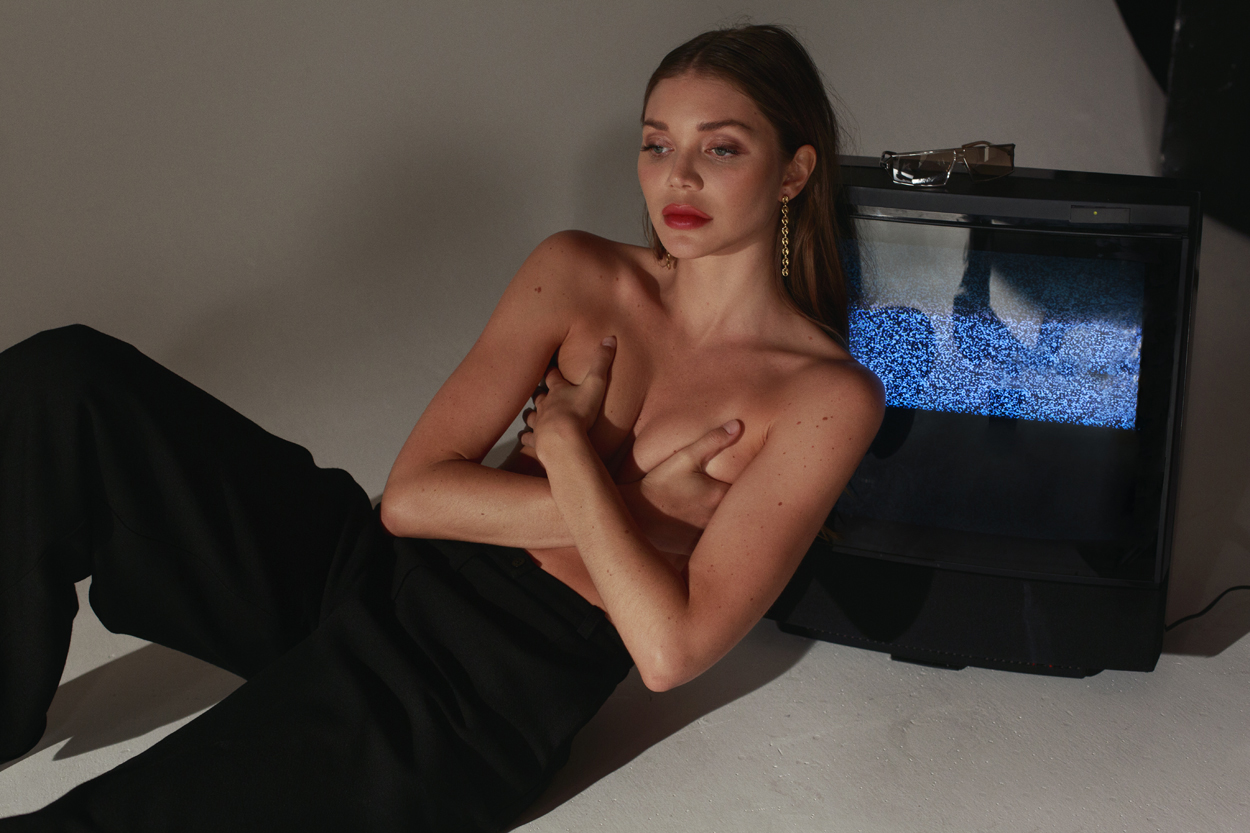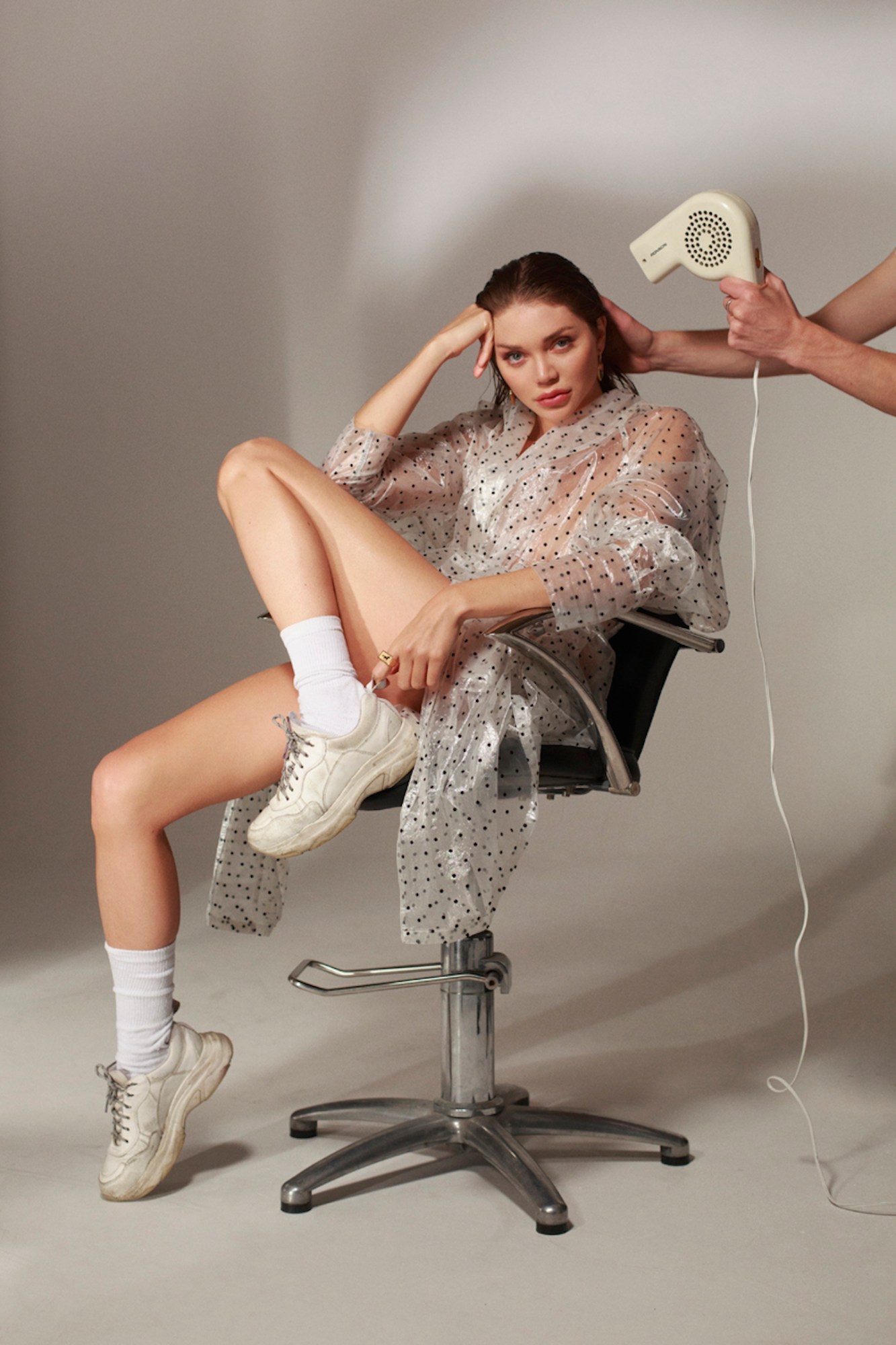“People are always changing. I find that more interesting than anything,” shares Jessie Andrews, who at 27 is the founder and CEO of Bagatiba, a responsibly made jewelry company, alongside three other brands, which range from swimwear to skincare. Her journey to entrepreneurship is an unconventional one, showing there isn’t one singular path to realizing your dreams — last time i-D spoke to Jessie, in a video she was at the end of her adult film career and musing on body positivity. Going from ex-adult star to entrepreneur, Andrews has mastered the art of the rebrand, both professionally and personally.
As a sought-after creative, Andrews shows that an individual’s past does not define one’s future. “There’s definitely a lot of stigma in everything like age, race, sex – there’s always going to be stigma, so the faster you get over that or forget about it or not care, the easier everything else is gonna become. I learned to deal with that really early on,” she says. Having dropped out of high school in Florida just three weeks shy of graduation, she moved to L.A. and within a year became one of the few adult actresses to break through to the mainstream, appearing on magazine covers and DJing, all the while quietly designing fine jewelry as a passion before turning 21. Now, her designs are worn by celebrities including Kaia Gerber and Kim Kardashian.
“All these things that have to do with the business from A to Z, whether its production or scaling or fulfillment, I’ve learned how to do on my own,” she explains. A rebrand is more than just a logo change – it requires vision, and the strength to bounce back from adversity and create something authentic. i-D recently spoke with Andrews about her nontraditional journey to personal success, fighting stereotypes, and disrupting the norm.

I know you’re from Miami. Can you take me back to the early years – what stimulated your creativity?
I grew up in Miami and had four older sisters. I was the youngest and my dad treated me like the boy he never had. I didn’t really care about fashion – instead of playing with Barbies I played with dinosaurs and my dad used to take me to work with him. I was like his boy pretty much, so when I was young I didn’t have that feminine side, the only [side] I saw was from my sisters. My mom worked nights – she’s a police dispatcher, and I didn’t have her around during the day as much as my sisters or my dad. I always played sports – club volleyball, basketball. I loved to draw, I was one of those kids that was good at everything but wasn’t great at one thing. I was never excelling in one thing and it helped me be able to learn so many different things. I took AutoCAD drafting, architecture, design, I also did art history. I was familiar with design and structuring things and when I was working with my dad – he’s a handy man – I learned how to take things apart and put them back together.
And you moved to L.A. when you were a teenager – what led to such a big decision to move cross country?
I was independent really young. Working so early and learning the value of money, I always had to work for what I had. My family was middle class and my parents were divorced. If I wanted a phone, if I wanted a car, they made me work for it. I learned the value of money early so I knew that money meant freedom. Money isn’t everything in the world – there’s love and family and all these things, but I knew the harder I worked and the more money I had, the more freedom I would have. When I started working, I got to do whatever I wanted pretty much. When I was 17 I had already been making enough money to live on my own and not be told what to do, so I moved out and didn’t finish school. They withdrew me from school when I was 18 because I had started shooting porn, so they pretty much kicked me out and I only had a couple months of school left. After 10 or 15 shoots, I realized that Miami wasn’t the place for what I was doing and I could make more money elsewhere. I had this opportunity to make more money and have more freedom and travel the world. I never thought I would go to L.A. – it opened my mind. I moved there when I was 19 and started shooting a lot.

Were you still working in the adult film industry in L.A?
I was still working in adult films from 19 until I was probably 23. In 2012 I had won acting awards for a movie I did – I won a bunch of awards as Best New Starlet. I always took a step back from the industry and looked at it from the outside, like what does this have to offer me and at what point am I just going to get lost in it? I always stayed away from drugs, stayed away from partying. After I won those awards I was like, “there’s really nothing else for me to do in this business.” Right before then, I had gotten into jewelry. I lived downtown and was walking around in the jewelry district and I didn’t know anything about the high fashion world, so jewelry was my introduction.
Most people dream of putting dreams into action. Can you tell me about some of the challenges you faced when you built your first brand?
Honestly, I knew nothing about fashion. I knew nothing about brands. I learned from the bottom to the top. Nobody I knew had a brand. There wasn’t this stigma of the internet yet – I started Bagatiba in 2012 when we didn’t have Instagram. I was still on Tumblr and Twitter and that first ever social media imagery hadn’t really hit yet and there was really no fear for me because I wasn’t fearful of anything else like doing porn, doing this, doing that. When I started Bagatiba I was designing things that I liked as a consumer. I had no fear of people not liking it. I also didn’t have Bagatiba attached to my name for stigma reasons. I had that fear early on that no matter what job I decided to do in the future, my name would always carry that stigma whether I liked it or not. I’m fine with it, I don’t care, but for other people to be okay with it I think I needed to separate it in the beginning. I didn’t have a rulebook. I had no fear then and didn’t know what to do so I was learning the entire time. For eight years I’ve just been learning how to structure a brand from start to finish. I don’t have to report to anybody and nobody can tell me how to run my own business. The fact that I depend on my own brand makes me care about it more. I need this to stay alive.

You mentioned a certain stigma you faced. How were you able to fight against this and introduce yourself to the world as a creative brand owner?
I kind of hid Bagatiba. You look at brands now like, “That’s a really cool brand, who’s behind it?” That’s also a stigma that bloggers and designers, whoever, is gonna have to deal with. And it’s the same I dealt with –I never wanted to use my name or anybody else’s name. That’s why I didn’t have the jewelry on celebrities until two years ago. I didn’t want anybody else to have control of the brand. I want people to solely judge the things that I make off of the design and the quality rather than because I make it, because you’re gonna like it or you’re not gonna like it. I do that with brands sometimes. I’m like, “Oh, yeah I don’t like that blogger, I don’t really like her style so I don’t like what she makes.” Whereas, if you just show me the piece I might like it. I had to deal with that stigma early on and knew that I would never be able to distinguish my porn from my name. I just learned how to deal with it early on and it doesn’t bother me, comments have never bothered me. But for me as a business woman, I needed to keep it separate for so long. Until two years ago, I didn’t tell anybody that Bagatiba or any other brands are my mine. I just let them live on.
Through the challenges, what keeps you going, what keeps you determined?
Like I said, money is freedom right? It’s freedom to create and to grow and have funds to work on new ideas that I have – the money and the freedom are funding creativity and I think that’s what everybody lives for, to be creative and to do what they want. There’s gonna be so many chapters of my life where I might not even do branding anymore and I might only do photography or I might only do charity work. Who knows where life is gonna take you, but as long as you stay interested in it, everything is gonna be easy. You just have to explore whichever passion you choose and always crave the new and exciting and learn from it. You should never stay stagnate.

Credits
Photography & Direction Daniel Sachon
Fashion 18.01 London
Makeup Grace Ellington using MAC
Hair Joe Burwin using EVO
Photography Assistance Abby Deakin
